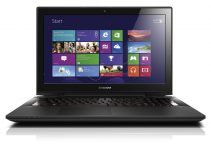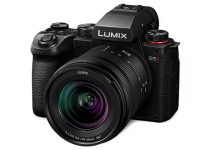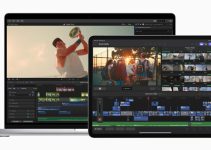Shooting anamorphic is not straightforward but there are reasons that it just might be worth the effort. There are more and more options available now for the camera, lenses and adapters required to shoot anamorphic and it is not outwith the reach of shooters on a budget. So why shoot anamorphic and if you do decide too, where do you start?
This video seems as good a place as any, so let’s find out what Caleb Pike at DSLR Video Shooter has to say about it.
Here are some basic principles about anamorphic shooting.
Anamorphic lenses are really expensive, like really expensive, so we are not going to cover them here and Caleb doesn’t go into them in his video.
Anamorphic lenses and adapters essentially squeeze the image coming into the camera and hitting, in our case, the sensor. Different lenses or adapters give different amounts of squeeze with two popular amounts being 1.33 x and 2.0 x. The more traditional size is 2.0 x and that gives a horizontal squeeze of twice the image size.
Cameras with 16:9 sensors can use 1.33 x anamorphic adapters to create a pleasing aspect ratio for the final image. If the camera has a 4:3 crop mode of the sensor, then a 2.0 x anamorphic adapter will create a nice aspect ratio. Confused yet?
So what happens when you use an anamorphic lens or adapter? The image is squeezed and distorted. The squeeze relates to the field of view, basically making the image much wider depending on the ratio of the lens.
The distortion comes in the form of lens flare, changed shape of bokeh, with circles of confusion becoming ovals, and light and distortion artefacts. Are all of these a good thing? Well, that’s an aesthetic judgement you will have to make for yourself but the overall effect is a more ‘cinematic image’.
So what does it take to make anamorphic work? Let’s focus on adapters. They start out quite simple and get a bit more complicated as we go along. Some will screw onto the filter of your lens and that’s about it, while some require a number of accessories to get them into place and working.
The accessories required might include clamps to hold everything together, variable diopters to bring everything into focus, a diopter to reduce the minimum focal distance to something usable, lens supports or rails as this all gets a bit heavy, and a monitor that will let you de-squeeze the image to see what’s actually going on.
Caleb suggests six adapter choices to get you started on your anamorphic journey:
SLR Magic Adapters
There are three to choose from – the 40, the 50 and the 50 2.0. The 40 and 50 models give a 1.33x squeeze, nice for 16:9 sensors and the 50 is a 2.0x squeeze, ideal for a 4:3 mode like that available on the GH5 for example.
The SLR Magic are a great place to start because they are simple, lightweight and fairly affordable. All three are rather soft when wide open so you will have to stop down your lens a bit to get a sharp image. They are easy to use, lock into place and have a single focus, no need for variable diopters and focus-pulling headaches.
They all produce blue-tinted flare and create lens distortion and the 50 and 50 2.0x models give you oval bokeh – one of the classic signs of anamorphic shooting.
Projection Lenses
The next option for anamorphic adapters is projection lenses. They are not designed specifically for this use but have become popular. There are various brands available online for the first type – the 16mm adapters – and all are dual-focus, which is tricky to use. They don’t offer great distortion but do have lovely flares.
Isco is a German brand who offer another two options called the UltraStars. They come in a variety of models and are modular so may need some assembly and clamps along the way. Dual-focus and 2.0 x, these adapters give less flare but are very sharp.
Should you try shooting anamorphic? I did for a while and it is a tricky business. Weighing the look of the image against the hassle and expense will be a different calculation for everyone and for me it wasn’t worth it in the end. So it really comes down to how far are you willing to go to achieve that particular cinematic film look.
[source: DSLR Video Shooter]
Order Links:
- SLR Magic Anamorphot-40 1.33x Anamorphic Adapter (B&H, Amazon)
- SLR Magic Anamorphot-50 1.33x Anamorphic Adapter (B&H, Amazon)
- SLR Magic Anamorphot-50 2.0x Anamorphic Adapter (B&H, Amazon)
- 16mm 2.0x Anamorphic (eBay)
- ISCO Ultrastar Anamorphic Lenses (eBay)
- ISCO Ultrastar RED Anamorphic (eBay)
Disclaimer: As an Amazon Associate partner and participant in B&H and Adorama Affiliate programmes, we earn a small comission from each purchase made through the affiliate links listed above at no additional cost to you.
Claim your copy of DAVINCI RESOLVE - SIMPLIFIED COURSE. Get Instant Access!





